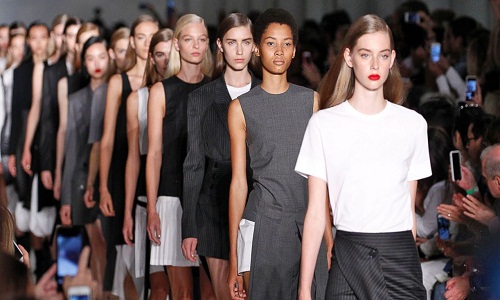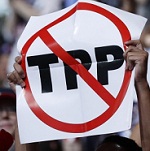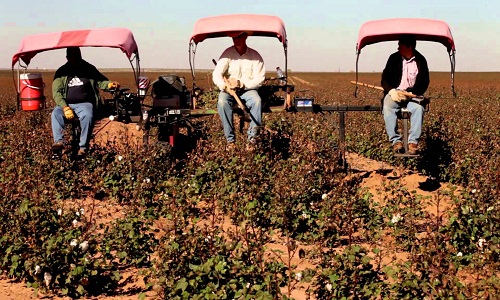FW
Last year, Vietnam’s total export turnover was 8.6 per cent higher than the previous year. This year the target is to go 6.9 per cent higher than last year.
Garment and textile exports are expected to have a turnover six per cent higher than that of last year. Exports of electronics, computers and spare parts are forecast to achieve an export turnover 19 per cent higher than last year.
Vietnam’s export turnover to its traditional markets including Asia, Europe and the US saw positive growth last year. Export turnover to the US saw the highest growth rate of 13.2 per cent followed by Europe with 11.3 per cent and Asia with 6.9 per cent.
The country believes that in 2017 import-export turnover would continue to increase thanks to the signing of a number of free trade agreements and FDI inflows shifting from other countries to Vietnam. Participation in the Asean economic community would also bring opportunities to the country by expanding its export markets as well as increasing competitiveness.
Last year Vietnam exported 25 products, with a turnover of more than billion dollars each. In 2016, the country reported a trade surplus of 2.68 billion dollars, accounting for 1.52 per cent of its total import-export turnover.
Texworld was held in France, February 6 to 9, 2017.
This is a specialized fabric show and this time the stress was on denim. Out of a total 760 exhibitors, about 60 companies specialized in the indigo blue cloth fabric. There were many customers from jeans brands and chain stores.
Three main trends dominate the market: stretch and bi-stretch qualities, vintage and second-hand looks, and sustainable products that employ less or zero water, less or no chemicals, but also alternative fibers.
Siddiqson developed its techno green selection of fabrics employing recycled polyester and recycled cotton. It also offers fabrics made with bamboo fibers, Crailar, a flax fiber. Also new is a fabric employing Jutacell, a fiber developed by Invista, obtained by employing leftovers from linen fiber manufacturing that would rather be thrown away.
Soorty has new sustainable products such as Zero Water Blue and Herbal Blue. Kassim considers stretch a big topic, together with greater demand for stretch qualities for men’s jeans. Foison concentrates on new products that feature second hand looks, though added with stretch for a comfortable fit.
Austrian lingerie specialist Wolford launched a few prototypes of a newly developed lingerie selection made with materials that can be 100 per cent recycled.
The Scheme for Integrated Textile Parks (SITP) hasn’t really been a success.
The intended objective, that of fostering the development of supply chain linkages and reduction in the cost of production by leveraging backward and forward integration in the value chain, is yet to be realised as most of the operational parks are partially functional.
Other problems are lack of coordination among units in a park, inability to attract the right investors, failure to achieve economies of scale and lack of collective approach in raw material sourcing and marketing.
High rentals in some parks, changes in other schemes or regulations, lack of marketing efforts, no special benefits available for investors in parks, poor accessibility and challenges for units in SEZ parks are some of the factors responsible for the scheme’s failing to attain its objectives.
Parks have not yet attained their planned investment levels due to lower occupancy rates. The current investment in 30 functional parks is around Rs 7,628 crores against their planned investment of Rs 16,628 crores.
Similarly textile parks have had a limited impact in bringing scale to the textile industry as most of the parks are of the size from 25 to 75 acres.
About 75 parks have been sanctioned till date, of which 30 are functional, while eight have applied for cancellation and others are at various stages of implementation. The 30 parks that are currently operational employ around 68,000 people, which is only 57 per cent of their planned employment.
Levi Strauss had a net revenue growth of one per cent for the full year and its fourth quarter. While full-year net income grew 40 per cent, fourth quarter net income declined by five per cent. Though the company’s direct-to-consumer sales grew due to Levi Strauss’ current retail and e-commerce performance, investments in the same area hurt net income.
For the full year, net revenue grew the most in Europe at ten per cent, due to strong growth of its retail channels. In Asia, net revenues also grew six per cent, excluding unfavorable currency effects of 18 million dollars. Meanwhile, in the Americas, net revenues remained relatively flat.
This is the fourth consecutive year of profitable constant currency revenue growth behind the strength of the Levi's brand and its global direct-to-consumer business. Given the diversified portfolio, the company remains optimistic about long term prospects for growth.
Gross profit for the fiscal year grew to 2,329 million dollars compared with 2,269 million dollars in 2015. For the three-month-period, gross profit was 659 million dollars compared with 658 million dollars for the same quarter of 2015.
Levi Strauss jeans are used by both workers as well as rock stars. It’s known for the 501 design and now the brand is adding stretch to this line. The move has been prompted by consumer preferences for comfort, which has women especially wearing yoga pants beyond their exercise classes.
Kenya is putting in place a policy to boost textile production.
Measures include allowing textile firms in export promotion zones to sell up to 20 per cent of their produce locally without paying duties. This will allow textile firms to take advantage of the growing demand for apparel products by the growing middle class and hence boost the sector.
The aim is to ensure citizens have access to the same high quality products that are sold to overseas markets. Kenya happens to be a major importer of secondhand clothes. It’s hoped increased local production will make consumers switch from purchasing secondhand clothes.
The Kenyan garment sector remains relatively small, with just 40,000 workers.
In Kenya, like many other African countries, the domestic textile industry has suffered because of the race to the bottom by global brands seeking out low-cost labor. Most artisans are trapped in domestic markets without links to international trade. Now some companies are trying to challenge this norm by sourcing artisans from marginalised communities to produce their fashion lines.
Kenya’s textile and apparel exports grew to 415 million dollars by the end of 2016, accounting for 30 per cent of industrial exports over the past five years.
Bangladesh’s readymade garment industry needs to increase its value addition through developing backward linkages in research and development, training, technology innovation, designing, fashion and by using its own fabrics and machinery.
Overall exports (including garments) rose four per cent in January 2017 compared to January 2016 and exports increased 6.43 per cent from December to January.
In the first seven months of financial year 2017 overall exports reached 20.11 billion dollars, of which garment exports accounted for 80 per cent.
In order for Bangladesh to achieve a readymade garment export target of 50 billion dollars by 2020, it is imperative to address some problems in the energy, labor, infrastructure and financial sectors. To achieve this more than 12.25 per cent export growth is needed every year.
Bangladesh's garment products are facing hard competition with some other Asian countries like Vietnam, Cambodia, India and Sri Lanka. Garment exports to the US, Bangladesh’s biggest market, slid by 1.49 per cent from January to November 2016. The sector also saw a 5.19 per cent drop in exports to the UK, the third largest importer during that time.
A training program has been launched for some eight lakh readymade garment workers in Bangladesh.
Yarn prices in Surat have shot up tremendously. This is badly affecting the fiber industry, which buys yarn from spinners. Surat has India’s biggest manmade fiber industry.
Earlier, because of the currency changes, the industry suffered major losses due to the closure of a huge number of weaving units. Production of polyester fabric fell by almost 75 per cent. At one time there were around 6.5 lakh power loom machines, manufacturing around four crore meters of fabric a year. Post-demonetization, production of fabric reduced to just 1.5 crore meters.
Now, with some spinners setting up a cartel and increasing rates, the industry is staring at huge losses. Weavers wanting to replenish their yarn stock, and preparing for the upcoming marriage season, are in deep trouble with the increase in yarn prices by spinners.
Weavers feel there is no rationale behind such a stiff increase in yarn prices and that spinners are operating a price cartel to pressurize weavers. Weavers want the textile ministry to intervene or lift anti-dumping duty on import of yarns.
The bulk of the workforce is with dyeing and printing units in textile processing houses, with the power loom sector, and with packaging and unloading in the trading sector. Most of the workers employed in this industry are migrants from Uttar Pradesh, Bihar, Maharashtra, Rajasthan, Orissa and Andhra Pradesh.
Colombiatex was held January 24 to 26. This is a trade show for fabrics, textiles, findings and trimmings, machinery and chemicals in the clothing and home industry. Colombiatex not only establishes the business agenda for the American continent but also brings together supply and demand from every segment of the industry and every fashion category. It is the scenario where national and international brands can begin their journey of distribution throughout Latin America.
It is meant for textile producers and distributors for garments, footwear and fine leather as well as companies who base their activities on technical and industrial applications, equipment, machinery and supplies for the fashion, home and footwear and fine leather industry.
The three-day event hosted over 21,924 national and international visitors, 5.5 per cent more than last year. It had 510 exhibitors, mainly from Colombia, India, Brazil, Spain and Italy, as well as 1,928 international buyers, nine per cent more than last year.
Close to 41 per cent of the investments were directed towards textile purchases, 23 per cent for machinery and equipment, ten per cent for trims and fittings, seven per cent for chemical products, seven per cent for threads and yarns and 12 per cent registered for other categories.
"As Fashion Week unfolds on glittering runways, the city’s once-thriving garment manufacturing industry has little to celebrate. Many companies are struggling with rising rents and labor costs and outdated work spaces and losing business to overseas competitors who can make clothes more cheaply. Block after block of factories and showrooms have disappeared from the renowned garment district in Manhattan, replaced by technology, media and consulting companies that focus on the design and marketing side of the business, if they are even connected to fashion."

As Fashion Week unfolds on glittering runways, the city’s once-thriving garment manufacturing industry has little to celebrate. Many companies are struggling with rising rents and labor costs and outdated work spaces and losing business to overseas competitors who can make clothes more cheaply. Block after block of factories and showrooms have disappeared from the renowned garment district in Manhattan, replaced by technology, media and consulting companies that focus on the design and marketing side of the business, if they are even connected to fashion.
There were just 22,626 city residents age 16 and older making apparel, accessories and finished textile products in 2015, a small fraction of the peak of 323,669 workers in 1950, and less than half of the 59,049 workers in 2000, according to an analysis of census data by Queens College.
New lease of life

But now the troubled garment industry is getting a lifeline. New York City officials have stepped up efforts to create a new, modern garment district — this time in Sunset Park, where large industrial buildings, affordable rents and easy access to transit lines and parking have already attracted dozens of manufacturing companies. A $115-million renovation of the city-owned Brooklyn Army Terminal, a former military supply base, will expand manufacturing space there by 500,000 sq. ft. this fall.
City officials have partnered with the Council of Fashion Designers of America, a leading fashion industry group, to help companies across the city to modernise their manufacturing processes and workplaces. A joint program, the ‘Fashion Manufacturing Initiative’, has awarded $1.8 million in grants to 19 companies since 2014 to pay for technology like 3D printers to create accessories, pattern-making and fabric-cutting software that results in less wasted fabric, and equipment that combines the fabric cutting, embroidering and stitching into one step.
Made in New York campaign
A city-financed marketing and advertising campaign ‘Made in New York’ that promotes film and television productions and technology companies, has been expanded to highlight locally made fashions with advertisements on newsstands, bus shelters and in Women’s Wear Daily, a publication that covers the industry. According to Alicia Glen, Deputy Mayor, overseeing the city’s economic development, everybody thinks of fashion as all glitz, but this is a homegrown industry with everyday New Yorkers working behind the scenes. Fashion manufacturing generates employment for lakhs of families and it needs to grow. What’s ‘Made in New York’ is good for New York.
Currently, there are 1,568 garment manufacturing companies in the five boroughs. The largest concentration, 419 companies, remains clustered in or around the garment district, even as manufacturing space there has shrunk to 830,000 square feet from 1.1 mn sqft as recently as 2009.
Steven Kolb, Chief Executive, Council of Fashion Designers of America, says local garment manufacturers were as vital as ever to the city’s fashion industry. Local companies are often more willing to accept small orders and take chances on new designers than overseas manufacturers. They can also turn around clothes more quickly, and their proximity allows designers to monitor production more closely. Because the closer you are to production, the better it is. For many companies, the biggest hurdle is finding an affordable place. UZI has hopscotched from one home to another on the Lower East Side and in Brooklyn, moving each time the rent increased. Today, it makes about 600 dresses a month in a 900-square-foot studio in a walk-up building in Sunset Park. It is so cramped that fabrics have to be stored in another building three blocks away.
Malia Mills is a recent arrival in Sunset Park. Mills moved her company to an 11,000-sq. ft. loft in Industry City, a complex of redeveloped buildings, in 2014 after it outgrew its previous home in the garment district. Mills now has enough space for a fabric library and plans to add more sewing machines and equipment. With this expansion, allied industries are also planning to set foot in the city. The only challenge that needs to be answered is the land cost.
"Right from campaigning days, President Donald Trump had made it clear that he is not in favour of multinational trade agreements viz. NAFTA and the Trans-Pacific Partnership. Last month, he signed an executive order withdrawing the US from the negotiations of the TPP, a free-trade agreement between the US and 12 other Pacific Rim nations. The TPP could abolish foreign taxes in the form of tariffs on the vast majority of US exports of food and agricultural products. Agricultural tariff rates average 19 per cent in Japan and 16 per cent in Vietnam, though some products have peak tariffs of more than 300 per cent, according to the US trade representative."

Right from campaigning days, President Donald Trump had made it clear that he is not in favour of multinational trade agreements viz. NAFTA and the Trans-Pacific Partnership. Last month, he signed an executive order withdrawing the US from the negotiations of the TPP, a free-trade agreement between the US and 12 other Pacific Rim nations. The TPP could abolish foreign taxes in the form of tariffs on the vast majority of US exports of food and agricultural products. Agricultural tariff rates average 19 per cent in Japan and 16 per cent in Vietnam, though some products have peak tariffs of more than 300 per cent, according to the US trade representative.
There is also the 2010 ASEAN-China Free Trade Agreement, which pulls together 10 nations in Southeast Asia. Although the US is not a member, the pact indirectly benefits American cotton farmers and is the catalyst behind the plant's recent surge in price.
Vietnam & US strong ties continue

The US is the world’s largest cotton exporter, supplying approximately 40 per cent of Vietnam’s cotton imports in the last three years, and 50 per cent for the year to date, indicating its increasing share. According to the US Department of Agriculture, American growers are expected to ship the most cotton this season (ending July 31) since 2013. US exporters have already sold 38 per cent of expected shipments, topping the five-year average of 32 per cent to date.
The 2010 ASEAN-China Free Trade Agreement allowed duty-free access of cotton from Vietnam and other ASEAN nations into China. Raw cotton unfortunately didn’t make the cut, facing a 40 per cent above-quota tax. Thus, it made sense that many Chinese-owned mills relocated to Vietnam, import raw cotton and ship the yarn back to China. As a result, approx. 50 to 65 per cent of Vietnam’s cotton imports are spun in foreign-owned mills, with the bulk exported to China.
Earlier this year, China auctioned its mounting cotton reserves, forcing its price closer to global levels. The move revived China’s domestic spinning industry and encouraged more governmental support for yarn spinning in the West of the country. Thus, China became a viable competitor to Vietnam, and added to the already rising demand for US cotton.
China’s three major yarn suppliers are: India, Pakistan, and Vietnam. The latter's growth has been the most impressive, particularly in 2016. Meanwhile growth in Pakistan and India declined, having faced crop shortfalls and tighter stocks. Additionally, yarn exports from major non-ASEAN countries such as Uzbekistan and South Korea experienced declines. Even as yarn spinning shifted from India, Pakistan, Uzbekistan, and to some extent China, into duty-preferred importer countries such as Vietnam, the US has derived an indirect benefit from China’s duty-free ASEAN access.
US withdrawal from TPP…
The TPP would have offered a level playing field for American workers and businesses, resulting in more ‘Made-in-America’ exports and higher-paying jobs. By cutting more than 18,000 taxes various countries put on Made-in-America products, TPP would have allowed US farmers, ranchers, manufacturers and small businesses to compete in some of the fastest growing global markets. Trump’s refusal to negotiate the treaty should be worrisome not only for cotton farmers but for all exporters to Asia.












